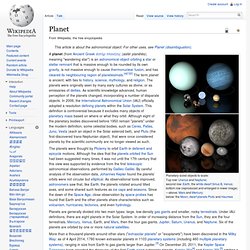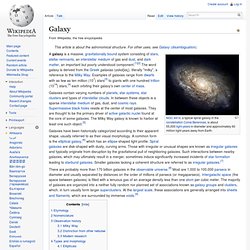

Planet. The planets were thought by Ptolemy to orbit Earth in deferent and epicycle motions.

Although the idea that the planets orbited the Sun had been suggested many times, it was not until the 17th century that this view was supported by evidence from the first telescopic astronomical observations, performed by Galileo Galilei. By careful analysis of the observation data, Johannes Kepler found the planets' orbits were not circular but elliptical. As observational tools improved, astronomers saw that, like Earth, the planets rotated around tilted axes, and some shared such features as ice caps and seasons. Star. For at least a portion of its life, a star shines due to thermonuclear fusion of hydrogen into helium in its core, releasing energy that traverses the star's interior and then radiates into outer space.

Once the hydrogen in the core of a star is nearly exhausted, almost all naturally occurring elements heavier than helium are created by stellar nucleosynthesis during the star's lifetime and, for some stars, by supernova nucleosynthesis when it explodes. Near the end of its life, a star can also contain degenerate matter. Astronomers can determine the mass, age, metallicity (chemical composition), and many other properties of a star by observing its motion through space, luminosity, and spectrum respectively.
Galaxy. Galaxies contain varying numbers of planets, star systems, star clusters and types of interstellar clouds.

In between these objects is a sparse interstellar medium of gas, dust, and cosmic rays. Supermassive black holes reside at the center of most galaxies.